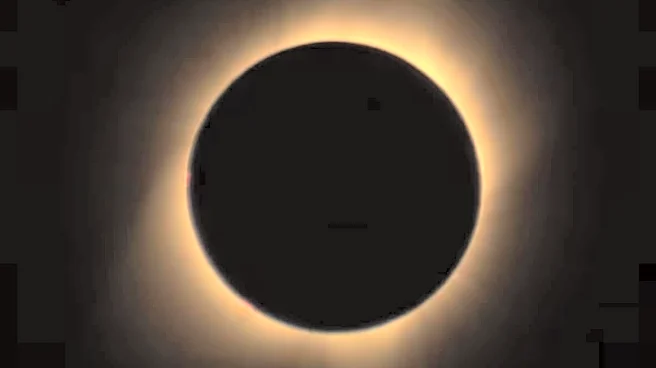On August 2, 2027, the world will witness a phenomenon that will be remembered for generations. In many regions, daylight will suddenly fade, temperatures will drop, stars will appear in the sky, and for a few minutes, it will feel as though the Earth has paused. This will be caused by the longest total solar eclipse of the 21st century, plunging affected areas into deep darkness for 6 minutes and 23 seconds. Scientists note that such a prolonged eclipse has not been seen in the past century and will be extremely rare to witness again.
During the eclipse, the Moon will completely obscure the Sun, turning day into dusk. Temperatures could fall by 5 to 10 degrees, winds may shift direction, and unusual behaviour may be observed in birds and other
animals.
Observers will also be able to see the Sun’s pale corona, the diamond ring effect, and bright celestial bodies such as Venus, Mercury, and certain stars.
Where Will Darkness Fall?
The eclipse will begin over the Atlantic Ocean, with the Moon’s shadow first touching near the Strait of Gibraltar. The darkness will then sweep across southern Spain, Morocco, Algeria, Tunisia, Libya, Egypt, and parts of the Middle East. In these regions, the Sun will be completely hidden for about six and a half minutes.
Countries such as the United States and large areas of South America, including Brazil, will not witness any part of this extraordinary event.
Why Scientists Say You Shouldn’t Miss It
While total solar eclipses occur roughly every 18 months, one of this duration is exceptionally rare. The 2027 eclipse is particularly remarkable because it will pass over densely populated and easily accessible areas, making it an ideal event to study astronomy, temperature fluctuations, and animal behaviour.
Researchers and space agencies around the globe are treating this as a live scientific laboratory, as opportunities to study the Sun’s corona this clearly and for so long may not arise for decades.
Minute-By-Minute Spectacle
Around 60-80 minutes before totality, the Moon will begin to graze the Sun’s edge. The sunlight will gradually fade, leaving a thin crescent of the Sun visible. Darkness will descend, temperatures will drop, stars will emerge, and the Sun’s corona will glow as a milky ring.
This magical darkness will last for 6 minutes and 23 seconds. Gradually, sunlight will return, restoring normal conditions, while observatories worldwide capture every moment.
Visibility In India
India does not lie within the narrow path of totality. Some regions may see a limited partial eclipse, but for the full experience, people will need to travel to select cities in Spain, Morocco, Egypt, or the Middle East.
Why The Eclipse Lasts So Long
Such an extended total solar eclipse occurs when the Moon is near its closest point to Earth (perigee), and its shadow strikes the Earth at a near-perfect angle. These rare conditions are what make the 2027 eclipse unusually long.
Safety During The Eclipse
It is safe to view the total eclipse with the naked eye only during totality. Observing the partial phases without proper protection is dangerous.
Experts recommend solar filters, certified eclipse glasses, or other approved protective gear.
A Once-In-A-Lifetime Event
NASA records indicate that the next eclipse of comparable duration will not occur until the 22nd century. For this reason, the 2027 event has been called ‘the greatest astronomical show of this generation’.
The six minutes of darkness on August 2, 2027, will become a historic moment: daylight will vanish, the Sun will disappear, planets will shine in the sky, and nature will respond in extraordinary ways. The world is eagerly awaiting this rare spectacle, one that many may never witness again in their lifetime.













/images/ppid_a911dc6a-image-176414018947733049.webp)

/images/ppid_59c68470-image-176400758851194073.webp)

/images/ppid_59c68470-image-176409259908552582.webp)